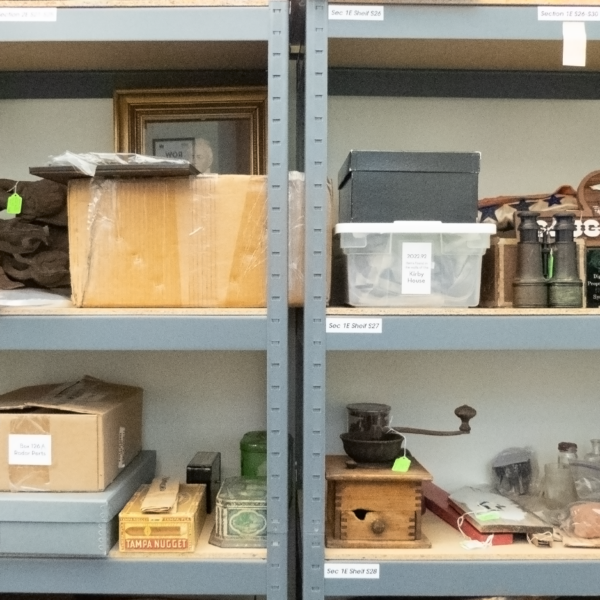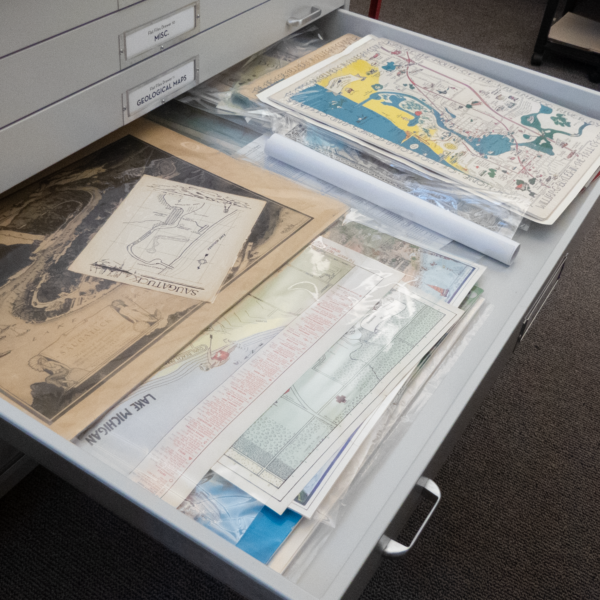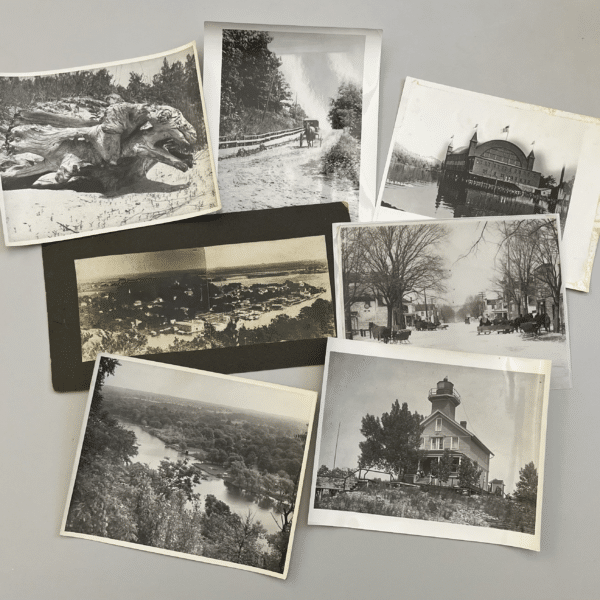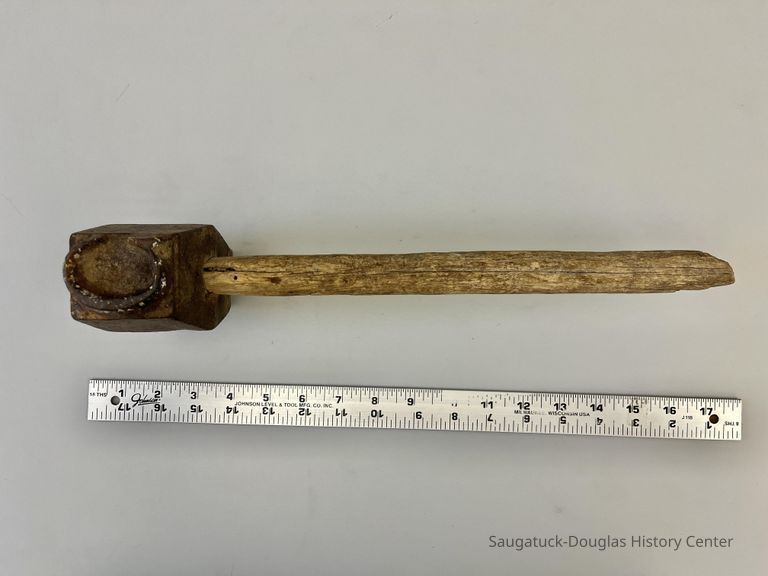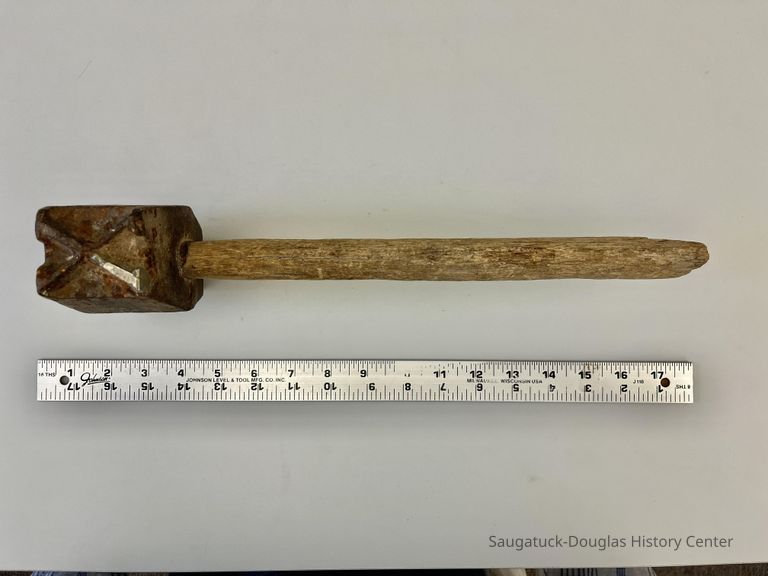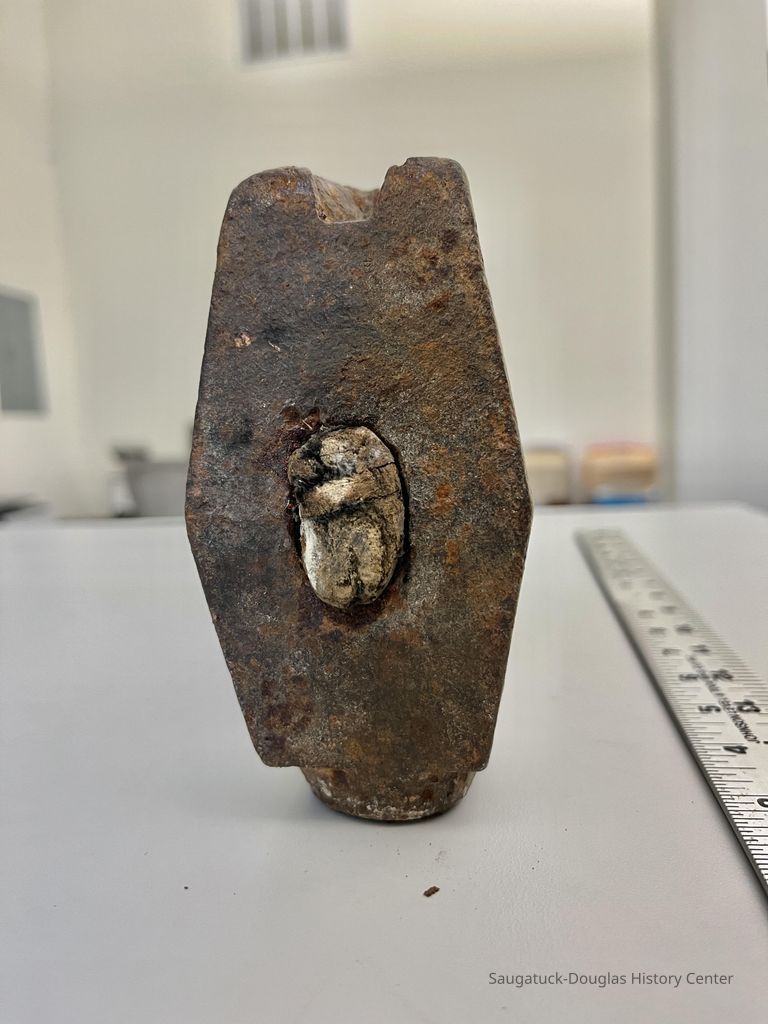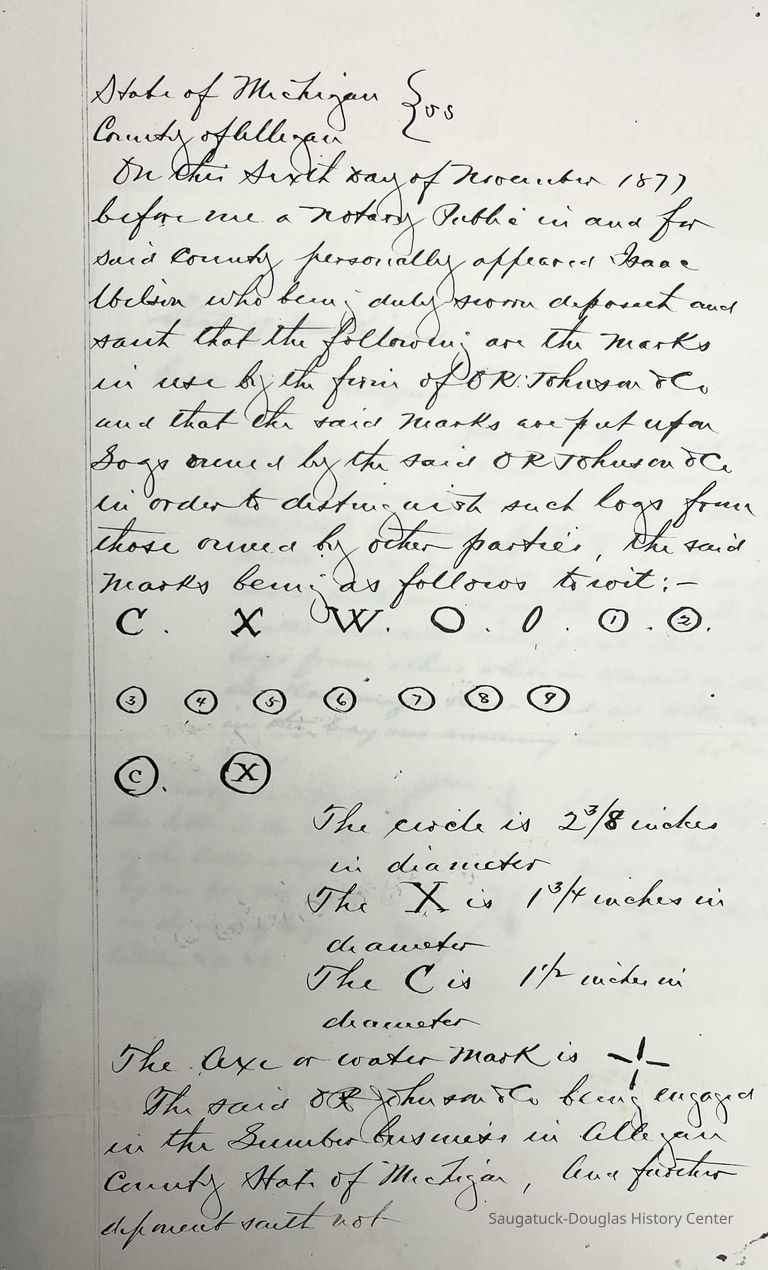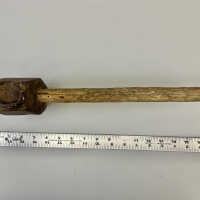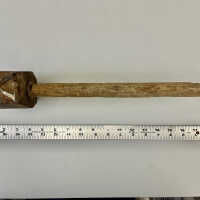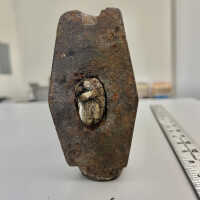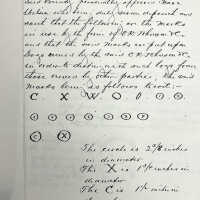Log Marking Hammer
Object/Artifact
Double sided, log-marking hammer with a C and X stamps on the business ends. Head is likely cast iron. Very worn wooden handle. In the woods of Michigan, dozens of logging operations would cut millions of board feet of timber. Many of these were transported to the many mills along the streams. Moving logs from the forest to the mill would be handled by driving and sorting crews. Laws in the early 1850s provided equal rights to lumber companies and all persons using the rivers to float logs. As lumber activity increased, logs became mingled in rivers. It was hard to distinguish owners and some spilled their logs into the river forcing others to transport them downstream for a free ride. Laws became necessary for smoother operations. Bark marks, brand slashed along sides of logs, no matter how clear or simple, could not be sorted quickly enough with thousands of logs coming down river. Trying to read these marks, it frequently was necessary to turn logs over in the water. Finally, in 1859, a law required log owners who floated logs to mark the ends of their logs and to register these marks with the counties. End marks worked far better. They were stamped into the log ends with heavy marking hammers. Each end was marked in several places so the brand was always easy to spot. This 1859 law had a provision also to deal with log thievery. So many logs floating freely, representing easy money, were described as a constant temptation to thieves. Marks were often obliterated or cut off in order to give stolen logs another brand. In time, companies that transported logs down the river were confined to work just one river, and owners of logs floating them on the river were required to register their marks in the counties through which the stream passed. Log marks became not only devices of orderly transportation of timber to mills, but representatives of law in maintaining equities among the men who harvested the timber. From the Benzie County Record Patriot (March 22, 2000)
2022.41.01
Log marks were registered in each county according to laws established in the Michigan legislature. The men who worked in the logging camps and on the rivers were a gregarious lot, who teased, and made up songs and crafted stories of Paul Bunyan. The design of log marks were another creative outlet for the men, an art using mainly line in patterns – straight lines, initials, triangles, squares or combinations of them. For example, the mark “C” for Cranes, a company in south Frankfort, from about 1895. Hammers like this were used to blast the mark into the log. The number “C” and "X" is forged backwards into the tool, to properly mark the log.
1835 Logging and Lumbering
2022.41
Boyd, Stephen
Donation
Log Brands
Log Transportation
Loggers
Logging
Lumber Trade
Lumbering
Lumbermen
Singapore
Judson Heath Colonial Inn
approximate
6 in
3 in
18 in
Sec 3E Shelf S18
Fair
A well-used tool. Heavy, metal head wobbles on wooden handle.
Johnson, O.R. 1815-1895

